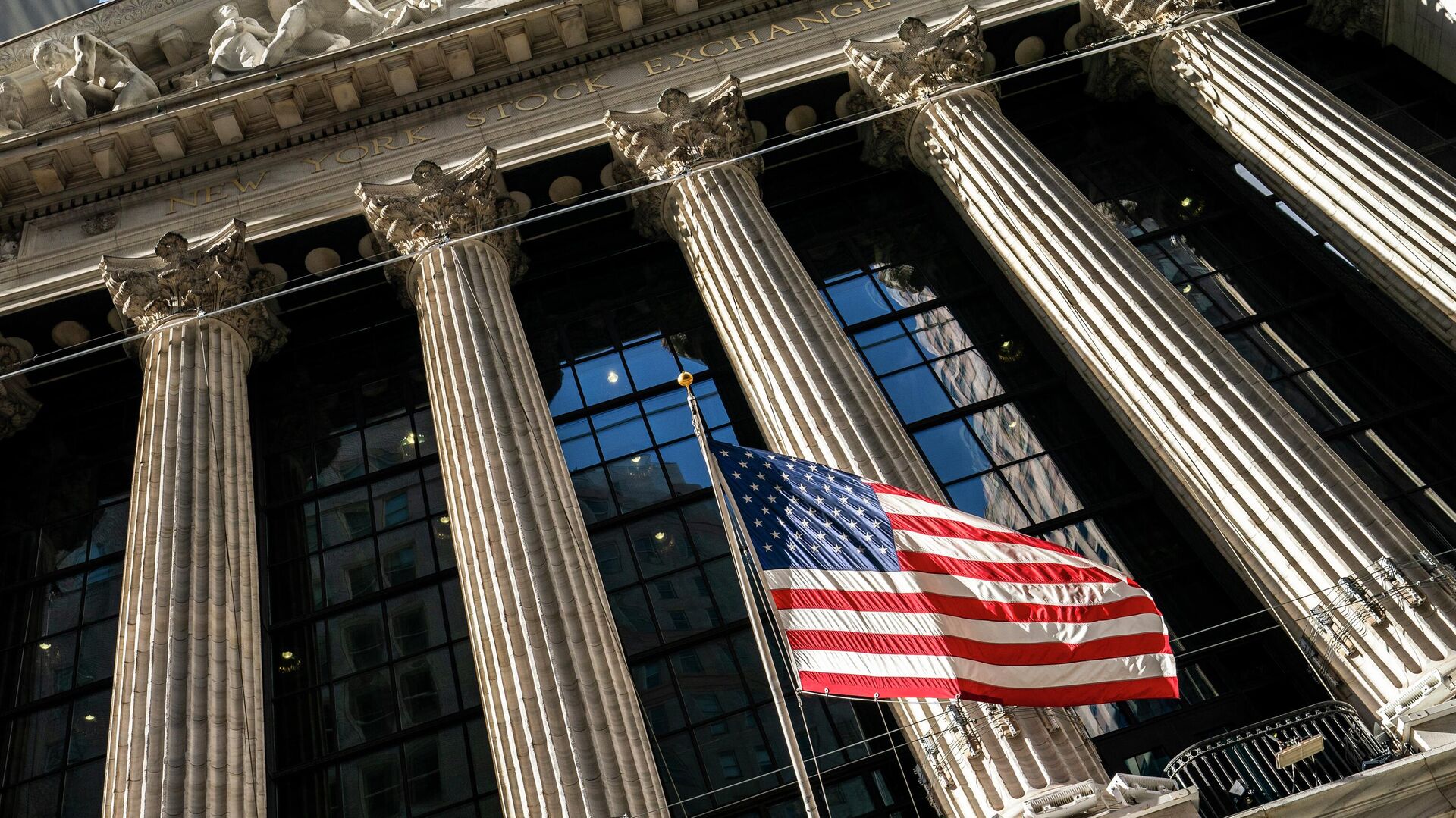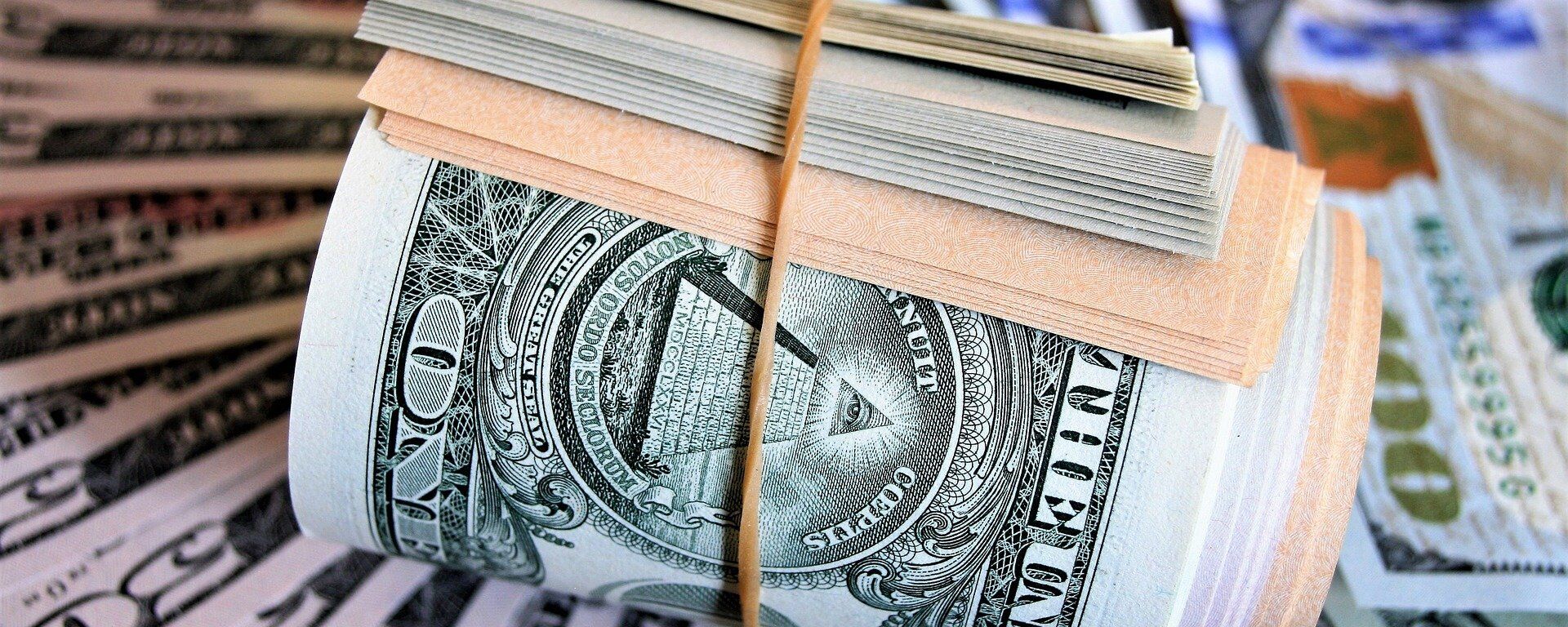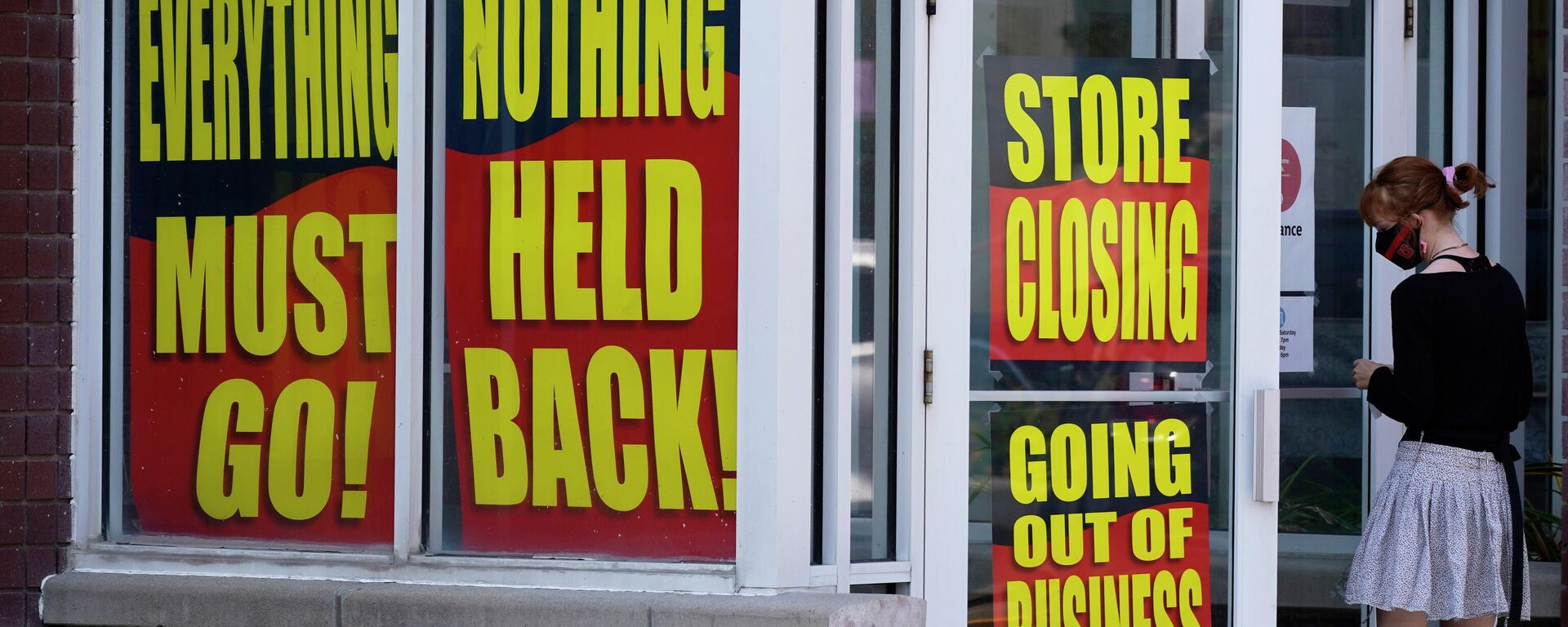https://sputnikglobe.com/20230621/us-fed-chief-says-nearly-all-policy-makers-want-more-rate-hikes-1111370396.html
US Fed Chief Says Nearly All Policy-Makers Want More Rate Hikes
US Fed Chief Says Nearly All Policy-Makers Want More Rate Hikes
Sputnik International
Nearly all policy-makers at the Federal Reserve think there should be more rate hikes to curb inflation, Chairman Jerome Powell said in a speech prepared for delivery before Congress on Wednesday, following this month's pause in the central bank's year-long campaign of monetary tightening.
2023-06-21T17:02+0000
2023-06-21T17:02+0000
2023-06-21T17:02+0000
americas
jerome powell
us
us economy
inflation
us federal reserve
rate hikes
https://cdn1.img.sputnikglobe.com/img/07e6/05/04/1095272424_0:321:3071:2048_1920x0_80_0_0_567714ac57b74db48660415d8f7574c6.jpg
Nearly all policy-makers at the Federal Reserve think there should be more rate hikes to curb inflation, Chairman Jerome Powell said in a speech prepared for delivery before Congress on Wednesday, following this month's pause in the central bank's year-long campaign of monetary tightening. "Nearly all FOMC participants expect that it will be appropriate to raise interest rates somewhat further by the end of the year," Powell said in his speech, referring to the Federal Open Market Committee, which decides on rates. The US Consumer Price Index, the broadest gauge for US inflation, grew by 4% in the year to May, expanding at its slowest pace in more than two years. The Personal Consumption Expenditures Index, the Fed’s preferred inflation gauge, meanwhile, grew by 4.4% in the year to April. Both are, however, at least twice above the Fed’s 2% target for annual inflation. The central bank, in response, has raised rates by 5% since the end of COVID-19 outbreak in March 2020. Powell’s comments come in the wake of Tuesday’s data showing groundbreaking on US single-family home-building projects up their most in more than three decades in May. Permits for future construction also climbed, suggesting that the housing market was turning a corner despite getting clobbered by Fed’s rate hikes. Mark Luschini, chief investment strategist at Janney Montgomery Scott, said the bullish housing starts may complicate the "formula around what the Federal Reserve is going to have to do in order to tame inflation". Powell acknowledged those thoughts in his speech. "My colleagues and I understand the hardship that high inflation is causing, and we remain strongly committed to bringing inflation back down to our 2% goal," the Fed chief said. "It will take time, however, for the full effects of monetary restraint to be realized, especially on inflation," he added, pointing to a "tight" labor market where demand "still substantially exceeds the supply of available workers." The labor market is the juggernaut of the US economy, adding hundreds of thousands of jobs a month over the past three years after initially losing 20 million to the COVID-19 pandemic. While policy-makers over the world typically celebrate on seeing good jobs numbers, the Fed is in a different predicament. The central bank wishes to see an easing of conditions that are a little "too good" now for the economy’s own good — in this case, unemployment at more than 50-year lows and average monthly wages that have grown without stop since March 2021. Such job security and earnings have cushioned many Americans from the worst price pressures since the 1980s and encouraged them to continue spending, further feeding inflation. The Fed has a mandate of ensuring "maximum employment" through a jobless rate of 4% or below, and keeping inflation "manageable". The last was a task easily achieved before the COVID-19 breakout, when prices expanded less than 2% a year. The pandemic and the trillions of dollars of relief spending by the government, however, triggered runaway inflation since mid-2021.
https://sputnikglobe.com/20230614/higher-for-longer-feds-june-rate-pause-presages-anticipated-future-hikes-economists-warn-1111163968.html
https://sputnikglobe.com/20230523/us-economists-expect-inflation-interests-rates-to-remain-high-in-2023--survey-1110529757.html
https://sputnikglobe.com/20230415/why-its-too-early-to-celebrate-plummeting-us-inflation-rate-1109555781.html
americas
Sputnik International
feedback@sputniknews.com
+74956456601
MIA „Rossiya Segodnya“
2023
Sputnik International
feedback@sputniknews.com
+74956456601
MIA „Rossiya Segodnya“
News
en_EN
Sputnik International
feedback@sputniknews.com
+74956456601
MIA „Rossiya Segodnya“
Sputnik International
feedback@sputniknews.com
+74956456601
MIA „Rossiya Segodnya“
us, us economy, inflation, recession, interest rat, rate hikes
us, us economy, inflation, recession, interest rat, rate hikes
US Fed Chief Says Nearly All Policy-Makers Want More Rate Hikes
WASHINGTON (Sputnik) - The FOMC’s next decision on rates will be on July 26, with economists predicting the Fed will add another quarter percentage point, bringing rates to a peak of 5.5%, to further tame inflation.
Nearly all policy-makers at the Federal Reserve think there should be
more rate hikes to curb inflation, Chairman Jerome Powell said in a speech prepared for delivery before Congress on Wednesday, following this month's pause in the central bank's year-long campaign of monetary tightening.
"Nearly all FOMC participants expect that it will be appropriate to raise interest rates somewhat further by the end of the year," Powell said in his speech, referring to the Federal Open Market Committee, which decides on rates.
The US Consumer Price Index, the broadest gauge for
US inflation, grew by 4% in the year to May, expanding at its slowest pace in more than two years. The Personal Consumption Expenditures Index, the Fed’s preferred inflation gauge, meanwhile, grew by 4.4% in the year to April. Both are, however, at least twice above the Fed’s 2% target for annual inflation.
The central bank, in response, has raised rates by 5% since the end of COVID-19 outbreak in March 2020.
"Inflation has moderated somewhat since the middle of last year," Powell said in Wednesday's speech, noting that it also "has a long way to go" in meeting the central bank’s cherished target.
Powell’s comments come in the wake of Tuesday’s data showing groundbreaking on US single-family home-building projects up their most in more than three decades in May. Permits for future construction also climbed, suggesting that the housing market was turning a corner despite getting clobbered by Fed’s rate hikes.
Mark Luschini, chief investment strategist at Janney Montgomery Scott, said the bullish housing starts may complicate the "formula around what the Federal Reserve is going to have to do in order to tame inflation".
Powell acknowledged those thoughts in his speech.
"My colleagues and I understand the hardship that high inflation is causing, and we remain strongly committed to bringing inflation back down to our 2% goal," the Fed chief said. "It will take time, however, for the full effects of monetary restraint to be realized, especially on inflation," he added, pointing to a "tight" labor market where demand "still substantially exceeds the supply of available workers."
The labor market is the juggernaut of the
US economy, adding hundreds of thousands of jobs a month over the past three years after initially losing 20 million to the COVID-19 pandemic.
While policy-makers over the world typically celebrate on seeing good jobs numbers, the Fed is in a different predicament. The central bank wishes to see an easing of conditions that are a little "too good" now for the economy’s own good — in this case, unemployment at more than 50-year lows and average monthly wages that have grown without stop since March 2021.
Such job security and earnings have cushioned many Americans from the worst price pressures since the 1980s and encouraged them to continue spending, further feeding inflation.
The Fed has a mandate of ensuring "maximum employment" through a jobless rate of 4% or below, and keeping inflation "manageable". The last was a task easily achieved before the COVID-19 breakout, when prices expanded less than 2% a year. The pandemic and the trillions of dollars of relief spending by the government, however, triggered runaway inflation since mid-2021.





